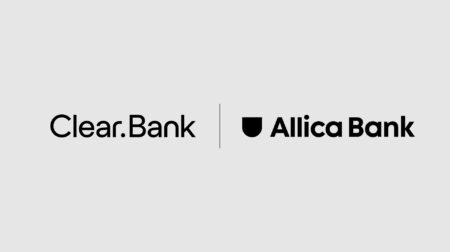Three things to look for when choosing your banking partner

In the UK, we have a healthy and competitive financial services industry, and firms have a wide choice of providers when it comes to moving money or holding funds – your own or your customers.
You likely know how a provider can support your business by now. But understanding the nuance of the different payment schemes and account types is only part of the story. Finding a trusted partner that can provide the quality of service you require is critical to making the most of the available options.
So, what should you look for?
The answer to that may depend on your business. For example, are you a new firm looking for operating accounts as part of your pre-regulation process? You might be a regulated provider looking for clearing and payment services but don’t want to become a direct scheme member or simply looking to change your agency banking provider.
While the use cases can vary, there are some underlying fundamentals and critical features to keep in mind.
Moving money for end customers is a given. The question is: which UK payment schemes will you use to do that? And importantly: how will you access those schemes?
In the UK’s centralised clearing system, money moves automatically between the largest financial institutions – those with the appropriate liquidity needs and risk appetite to participate in the system. The movement of money is facilitated and simplified by using a finite number of payment schemes.
A payment scheme is a body that sets out the rules for how money moves from one party to another. These rules cover the steps that need to be followed to make a payment and provide the processes to settle cleared transactions, as well as the payment system and infrastructure that needs to be used to settle transactions. A payment scheme creates these rules and acts as their guardian, taking responsibility for overseeing them.
The primary payment schemes in the UK:
- Bacs: The Bankers’ Automated Clearing System (Bacs) is the UK’s bulk payment scheme that is most often used for high-volume, recurring payments. You can use Bacs for transactions up to £20,000,000.
- CHAPS: The Clearing House Automated Payment System (CHAPS) is the UK payment scheme commonly used for high-value payments. Based on Real Time Gross Settlement (RTGS), money moves from one account to another on a near real-time basis, subject to checks and controls imposed by the banks in the payment chain.
- Faster Payments (FPS): facilitating real-time instant payments for transactions, allowing customers to make and receive payments within minutes and have near-instant access to funds. It’s the backbone of UK payments, being available 24/7 for 52 weeks of the year.
Accessing the schemes
Connectivity alone is not the only factor. Firms must also consider the technical aspects of how a provider accesses the schemes and their uptime. While a scheme may run 24/7 365, a provider may not offer the same availability. You should also examine how it performs, communicates any updates and monitors performance.
You could choose to become a direct participant in one or more of the schemes. That way you’d maintain the tightest data controls and autonomy over your payment capabilities. But becoming a direct participant also has its drawbacks:
- It takes a substantial capital investment to build the integration and then keep up with the regulatory and testing requirements of a payment scheme.
- The process of becoming a direct participant is often long, and always complex.
- Building and maintaining a team to support the 24/7 and real-time requirements of the schemes is costly.
- It takes up time, focus and resources that could be better spent on developing your products and services.
Ask your provider
- Which schemes do you provide direct access to?
- How do you connect to the schemes?
- How do you process payments? Are there any cut off windows?
- Can you provide ‘out of hours’ payment processing?
- How many customers do you have connecting to those schemes?
- What volumes are your customers transacting across the schemes?
Many ‘bank-like’ services are available that can offer different levels of payment connectivity, but they are not created equally. The line between bank and non-bank provision of financial services is becoming increasingly blurred due to the significant growth in the number and use of electronic money institutions.
To understand what this means, you must evaluate the types of providers and the protections they offer to you and your customers.
Electronic Money Institution (EMI)
One option available to firms is using an Electronic Money Institution or EMI. EMIs were introduced to create more competition in the payments sector and, as a result, improved choice, convenience and value for customers.
They are regulated entities that offer e-money payment accounts that allow customers to accept and execute payments without the need for a bank account. As a result, they can facilitate transactions such as cash withdrawals from a payment account, credit transfers, direct debits, remittances, and foreign exchange services.
While they were seen as competitors to the incumbent banks to support newer firms in getting to market quicker, it is important to understand that EMIs also have several limitations that you must consider when setting your risk tolerances for your service.
Those limitations include:
- An EMI, ultimately, requires a partner bank to operate, potentially exposing you to two layers of risk appetite. That appetite, between who the EMI would like to service and who the bank agrees they can service, may not always align and can lead to service reliability and continuity issues.
- Funds held with an alternative (non-bank) service provider, such as an electronic money (e-money) or payment institution, do not qualify under the Financial Services Compensation Scheme (FSCS). When a customer transfers funds to one of those institutions, they do so on the premise of making a payment, so the funds are not considered a qualifying, protected ‘deposit’.
- EMIs must have safeguarding arrangements to protect the firm’s customer funds. There are two ways in which an EMI may safeguard relevant funds:
- the segregation method where the EMI must place relevant funds in a separate account from the institution’s working capital and other funds and/or
- insurance or comparable guarantee method
However, it may not be apparent what an EMIs approach to safeguarding is.
These alternative providers cannot accrue or pay interest on these funds. They cannot use customer funds for their own business activities and must only hold funds for the purpose of processing payment transactions.
Authorised Payment Institution (API)
Another potential option is using an Authorised Payment Institution (API). Credit card processors, payment account operators, remittance operators, foreign exchange businesses, and payment initiation businesses are all examples of APIs. They are broadly similar to an EMI but with one significant difference – they cannot issue e-money.
Ask your provider
- How is your firm regulated – are you a bank, payments institution or an EMI?
- Where are your customer funds stored?
- What customer protections do you have in place?
- Do you partner with anyone to offer deposit protection such as FSCS?
While the breadth and depth of the schemes available are critically important, you may need more from your banking partner. There’s a wide variety of account types available depending on the services you offer:
- Operating accounts: where you hold your own business's operational funds.
- Customer segregated accounts: Your customers' accounts that sit alongside your operating accounts, keeping your customers' funds separate from your own.
- Client money accounts: accounts that let your business receive and hold money for (or on behalf of) your customers. These accounts separate your customers' CASS 7 investment funds from your own operating accounts.
- Multi-currency accounts: holding multiple currencies within one account, whether operating, segregated or client money.
That means examining the additional services on offer, particularly around account types, account structures and multi-currency support. The question of real vs virtual then becomes a decision about the best way for your business to structure those accounts.
When it comes to account structures, there are two options:
- Real accounts: an account that holds money. Real accounts have balances that are credited or debited. This type of account structure will have its own account number, sort code and IBAN (International Bank Account Number) for each account. They offer full open/close, disable, re-enable and freeze functionality.
- Virtual accounts: unlike real accounts, virtual accounts don’t hold any money. A virtual account is really a mechanism to allocate money to a pot within a real account. That means funds don’t actually move, and the account number works like a reference number. You might think of them as redirecting money to and from a real account in real-time, but they don’t settle any transactions or carry their own balances.
Ask your provider
- Do you offer operating, client segregated, client money and multicurrency accounts?
- Do you provide real and virtual accounts?
- Can you outline the process of switching from real to virtual?
- How many virtual accounts can you open, and at what cost?
- Account features, for example: can the beneficiary see the name of the sender?
Conclusion
These aren’t the only things to consider when looking for a banking provider. Other elements like integration experience, ongoing support and supplier stability should also factor into your decision.
Read the ClearBank buyer’s guide to help navigate the critical factors and understand what else to look for in a provider.


